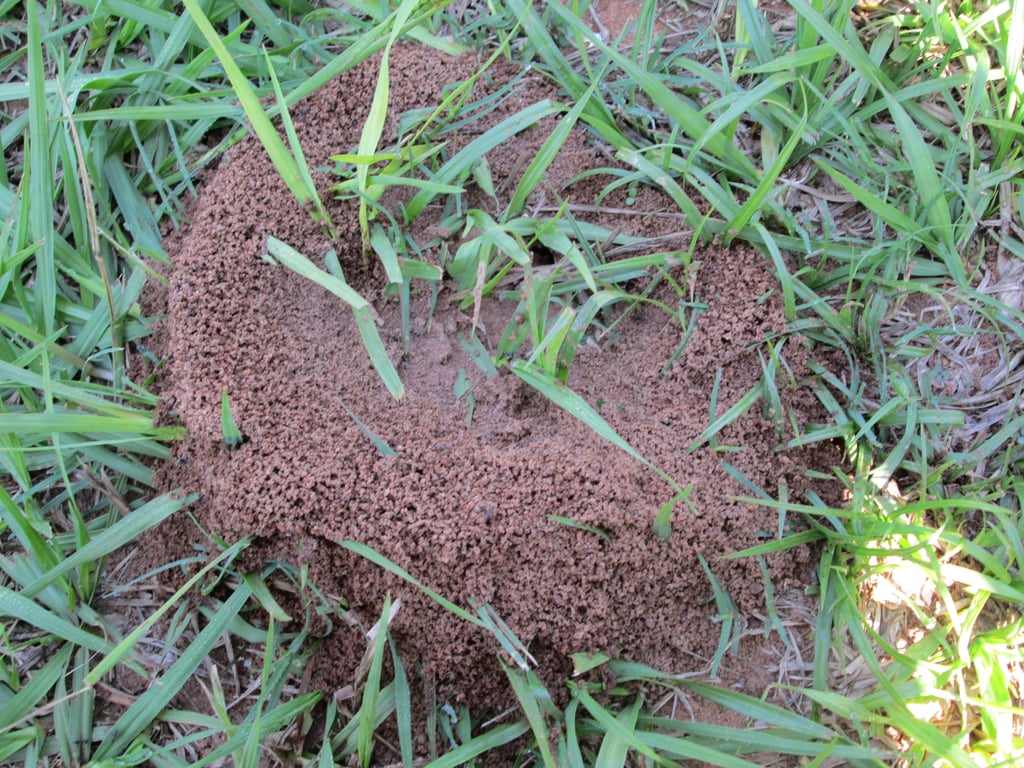
Ants are mainly considered a beneficial insect as they relate to lawns. Several species of ants commonly inhabit home lawns and other ornamental planting including shrubs and trees. There are over 400 species of ants that inhabit North America. Some are parasitic to other insects-including other ants, and some are plant eaters. Many others are omnivores and feed on both plants and flesh of vertebrates and invertebrates. Their food source may be alive or dead. Most species do not cause direct harm to humans, but a few can cause a painful sting, such as the Fire Ant. Ants contribute significantly to the control of other insect pests by feeding on their eggs or larvae.
One of the species that are found in lawns is the Little Black Ant that makes a crater of very fine soil around their nest opening.
Lifecycle
The life cycle of the ant consists of four stages: egg, larva, pupa, and adult. Fertilized eggs produce female ants (queens, workers, or soldiers); unfertilized eggs produce male ants. Ants form colonies and nests where the queens remain. Most species of ants have only one queen per nest. The queen lays eggs required to maintain and increase the colony. Queens can live from 1 – 15 years and workers up to 7 years.
Egg: Ant eggs are oval shaped and tiny (they are on the order of 1 mm long, but the queen's egg is many times larger).
Larva: The worm-like larvae have no eyes and no legs; they eat food regurgitated by adult ants. The larvae molt (shed their skin) many times as they increase in size.
Pupa: After reaching a certain size, the larva spins a silk-like cocoon around itself (against a solid object, like the wall of the chamber) and pupates. During this time the body metamorphoses (changes) into its adult form.
Adult: The pupa emerges as an adult. The entire life cycle usually lasts from 6 to 10 weeks.

Damage
Ants are generally not a problem in lawns and seldom cause damage. They may cause minor damage by loosening the soil and constructing small mounds. Mounds on the surface can smother the grass, and the tunnelling creates galleries in the soil which can disturb the roots, dry the soil and cause the grass to thin out. The mounds can also be a nuisance when mowing as they can damage the mower blades.
Imported fire ants are a big problem in the southern eastern US but are not found in the northern US and Canada. Fire ants can cause nasty stings and create large mounds within a lawn that can damage mowing equipment.
Management Recommendations
The key to controlling an ant infestation is to locate and destroy the nest, including the queen. Ants prefer dry, sunny locations. Ensuring adequate soil moisture is important. If the area is flooded with water, it will often reduce the populations. If populations are extremely high and damage is evident then spot treatment of the damaged areas is recommended. Spot treatment is recommend to treat the damaged areas until the populations are moderate as ants are beneficial insects that help control populations of other harmful turfgrass pests.
If you suspect that you have an ant problem, but are unsure, contact your local Nutri-Lawn and we'll come out and take a look for you.







